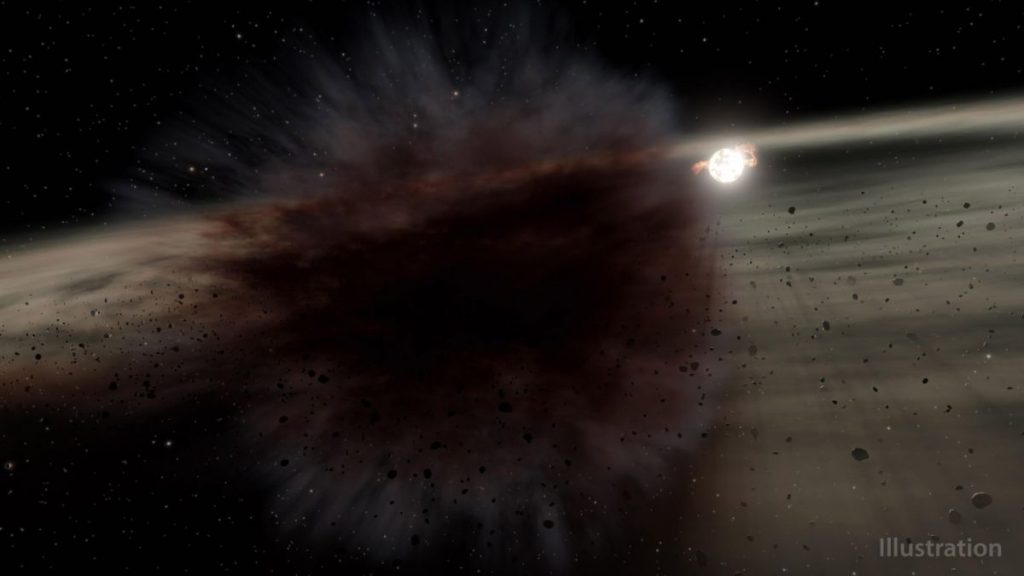
Dust cloud the size of a star formed by massive asteroids colliding (Image Credit: Space.com)
Data from a retired NASA space telescope revealed the disaster scene left behind by a cosmic collision.
NASA’s Spitzer Space Telescope observations of a debris cloud’s size suggests that the dust was formed when two bodies the size of dwarf planets smashed together a few hundred light-years away from us.
“By looking at dusty debris disks around young stars, we can essentially look back in time and see the processes that may have shaped our own solar system,” lead author Kate Su, a planetary debris risk researcher and research professor at the University of Arizona, said in a March 18 statement from NASA’s Jet Propulsion Laboratory (JPL) in California, which operated Spitzer.
Gallery: The infrared universe seen by NASA’s Spitzer Space Telescope
The new study represents the first successful effort by astronomers to observe a debris cloud as it passed in front of its parent star, called HD 166191. The star’s size and brightness, along with the debris cloud observations, allowed astronomers to estimate the size of the cloud, along with the size of the possible impacting objects.
Spitzer retired in 2020 after about 17 years of gazing at the universe in infrared light. Infrared allows astronomers to peer through dense dust clouds that obscure our ability to see what’s happening using visual wavelengths.
HD 166191’s neighborhood is full of debris, in part because the star is relatively young: just 10 million years old, compared with the sun‘s 4.5 billion years. Dust left behind by the young star’s formation is now clumping together to create planetesimals — the possible “seeds of future planets,” JPL called them.
But once gas begins to get in between those small worlds, catastrophe can arise from collisions. Spitzer performed more than 100 observations of the star between 2015 and 2019, and in 2018 the investigators got lucky.

In the middle of 2018 and as astronomers watched, the HD 166191 system began to brighten, likely a sign of higher amounts of debris. But Spitzer also caught a transit — the cloud of debris passing between the telescope and the star, causing the star to temporarily appear dimmer as when you see a cloud pass in front of the sun.
Ground-based telescopes had also spotted the transits, and combining that data with the Spitzer data allowed scientists to estimate the dust cloud’s size and shape.
The observations suggest the cloud was stretched out to something like three times the size of the star. However, the infrared brightening Spitzer saw suggests that only a little bit of the cloud passed in front of the parent star. The rest of the cloud, unseen by the telescope, might have been hundreds of times larger than HD 166191.
And in order to form a cloud that big, the scientists calculated that the objects colliding must have been massive, the size of dwarf planets in our own neighborhood. The team compared the colliding objects to Vesta, the second largest asteroid, which is about 330 miles (530 kilometers) wide.
That first collision caused a cascade of smaller crashes too, the scientists believe.

While the cloud began dispersing quickly and had disappeared from Spitzer’s view by 2019, the authors said this study may help them test out modeling and theories about how young planets grow.
“By looking at dusty debris disks around young stars, we can essentially look back in time and see the processes that may have shaped our own solar system,” Su said in the statement. “Learning about the outcome of collisions in these systems, we may also get a better idea of how frequently rocky planets form around other stars.”
A study based on the research was published March 10 in The Astrophysical Journal.
Follow Elizabeth Howell on Twitter @howellspace. Follow us on Twitter @Spacedotcom and on Facebook.





